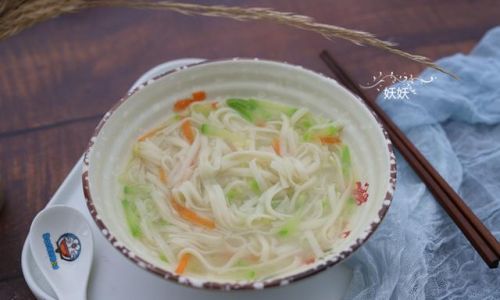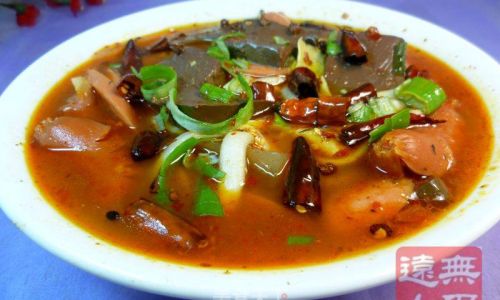Introduction

Introducing solid foods to your baby is a milestone in their development, and one of the first foods many parents choose to introduce is noodles. Noodles are not only easy to prepare but also offer a variety of nutrients that are essential for your baby’s growth. However, cooking noodles for babies requires a bit more care and consideration than preparing them for adults. In this comprehensive guide, we will walk you through the process of how to cook noodles for your baby, from selecting the right type of noodles to ensuring they are safe and nutritious for your little one.
Chapter 1: Choosing the Right Noodles
When selecting noodles for your baby, there are several factors to consider to ensure they are suitable for their age and dietary needs.
-
Type of Noodles: Whole wheat noodles are a great option for babies as they are rich in fiber and essential nutrients like iron and zinc. Avoid noodles made with refined flour, as they offer less nutritional value. You can also opt for vegetable-based noodles, such as those made from spinach or sweet potato, which provide additional vitamins and minerals.
-
Shape and Size: Smaller, thinner noodles are easier for babies to chew and swallow. Avoid large, thick noodles or those with sharp edges that could pose a choking hazard.
-
Ingredients: Always check the ingredient list to ensure there are no added sugars, salt, or preservatives. Opt for noodles made with simple, whole ingredients that you can recognize and pronounce.
-
Allergens: If your baby has any food allergies, be sure to read the label carefully to avoid any potential allergens, such as gluten, nuts, or dairy.
Chapter 2: Preparing the Noodles
Once you have selected the right noodles for your baby, it’s time to prepare them. Here’s a step-by-step guide to cooking noodles safely and nutritiously for your little one.
-
Reading the Instructions: Start by reading the package instructions carefully. Different types of noodles may have different cooking times and methods.
-
Boiling Water: Fill a pot with enough water to fully submerge the noodles and bring it to a rolling boil. Use filtered or bottled water if your tap water contains high levels of minerals or contaminants.
-
Adding Noodles: Once the water is boiling, carefully add the noodles to the pot. Stir immediately to prevent them from sticking together or to the bottom of the pot.
-
Cooking Time: Cook the noodles according to the package instructions, but keep in mind that babies typically prefer softer, more tender foods. You may need to cook the noodles for a slightly longer time than recommended for adults.
-
Testing for Doneness: To check if the noodles are done, remove one with a fork and let it cool slightly. Taste it to ensure it is tender enough for your baby. If not, cook for a few more minutes and test again.
-
Draining the Noodles: Once the noodles are cooked to your liking, use a colander to drain them thoroughly. Shake off any excess water to prevent the noodles from becoming too soggy.
Chapter 3: Adding Flavor and Nutrition
Plain noodles can be a bit bland for babies, so it’s important to add some flavor and nutrition to make them more appealing and nutritious.
-
Pureed Vegetables: Add a few spoonfuls of pureed vegetables, such as carrots, sweet potatoes, or peas, to the noodles. This not only adds flavor but also boosts their nutritional value.
-
Broth: Use homemade chicken, vegetable, or beef broth instead of plain water to cook the noodles. This will add a rich, savory flavor that babies tend to love.

-
Herbs and Spices: Introduce mild herbs and spices, such as dill, parsley, or a pinch of garlic powder, to enhance the flavor without overpowering the noodles.
-
Healthy Fats: Drizzle a small amount of olive oil or avocado oil over the noodles to add healthy fats and a subtle flavor.
-
Cheese: For older babies who can tolerate dairy, sprinkle a little shredded cheese over the noodles. Cheese adds calcium and protein while also making the dish more appealing.
Chapter 4: Serving and Feeding
Now that your noodles are cooked and flavored, it’s time to serve them to your baby. Here are some tips to make feeding time a pleasant experience.
-
Cooling Down: Let the noodles cool to a safe temperature before feeding them to your baby. You can test the temperature by placing a small amount on the inside of your wrist.
-
Portion Size: Start with a small portion and offer more if your baby seems hungry. Remember, babies’ stomachs are small, and they may not be able to eat a lot at first.
-
Using a Spoon: Use a small, soft-tipped spoon to feed your baby. Be patient and let them take their time chewing and swallowing.
-
Watching for Signs: Pay attention to your baby’s cues. If they seem full, stop feeding. If they start to choke or gag, act quickly to remove the food from their throat.
-
Experimenting with Textures: As your baby grows and becomes more adept at chewing, you can gradually introduce noodles with firmer textures and different shapes. This will help them develop their chewing and swallowing skills.
Chapter 5: Storage and Reheating
If you have leftover noodles, you can store them in the refrigerator for up to two days or in the freezer for up to two months. Here’s how to store and reheat them safely.
-
Storing: Place the cooled noodles in an airtight container or freezer bag. Label the container with the date and contents.
-
Reheating: To reheat, place the noodles in a microwave-safe bowl and heat on low power, stirring occasionally to prevent hot spots. Alternatively, you can reheat them on the stovetop over low heat, stirring frequently.
-
Checking Temperature: Before feeding, make sure the noodles are at a safe temperature by testing them on the inside of your wrist.
Conclusion
Cooking noodles for your baby can be a fun and rewarding experience. By following the steps outlined in this guide, you can ensure that your baby receives a nutritious, flavorful, and safe meal that they will enjoy. Remember to always pay attention to your baby’s cues, and as they grow, you can gradually introduce new textures and flavors to expand their palate. With a little patience and creativity, you can create delicious and nutritious noodle dishes that your baby will love.






0 comments